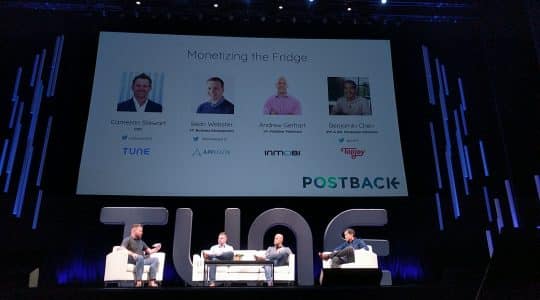
Transparency is a key part of every advertiser and publisher relationship. Lately, industry articles have highlighted the need for advertisers to know where their ads are being served in order to ensure they’re not throwing away money on poor quality advertising. (For example, serving an Omaha Steaks ad on a website dedicated to vegetarian recipes is probably not the best ad buy. Advertisers want to know when these scenarios occur.)
Transparency benefits everyone
While transparency from the publisher side is important to advertisers, ad partners rely on advertisers to provide transparency on how an ad performs after a user engages with it. Advertisers are looking to hit specific performance goals in their app campaigns, and as app advertising becomes more advanced, mobile advertisers in particular have gone from tracking app installs only to tracking multiple key performance metrics within their apps. Payouts to ad partners have followed a similar route; advertisers initially paid only on installs, but now retention goals and engagement-based payouts come with a standard install payout.
Excellent user acquisition only matters if there’s excellent engagement
Four years ago, a VP of user acquisition for a large gaming company told me, “I don’t care about the quality of the user — my job is to find new users. It’s not my job to retain them.”
This was very much the user acquisition mindset when tracking app installs was becoming popular. Back then, advertisers typically didn’t share any information other than install data, because that’s all they cared about, leaving ad networks no choice but to align their strategy with the advertiser’s. Nowadays, advertisers have evolved to care more about in-app activity like retention, registrations, and first bookings. This is requiring more transparency to allow ad partners to align their focus with the same quality metrics that advertisers are concerned with. And ad networks are evolving with them to focus on quality based on the metrics the advertiser will share.
Front-of-the-funnel data that advertisers do share with ad partners — installs, registrations, first bookings, etc. — is still important, usually because that’s how you’re paying your ad partners. But there’s much more that goes into calculating how valuable an app install is. For instance: do ad partners know if a user has made more than one purchase? Are they aware that users who come from Publisher A invite friends to install the app 60% more than Publisher B? Are users from the ad partner not spending any money in the gaming app, but playing so much that they drive 200% more advertising revenue for the app developer than the average user? Advertisers are tracking — but not sharing — metrics that touch retention, monetization, and virality, and are increasingly using tools like TUNE’s Multiverse to determine metrics like return on ad spend (ROAS).
Now, even though advertisers are collecting tons of post-install user information, there is still information advertisers would understandably like to keep private. But at the same time, there is positive momentum to gain from sharing actionable information that helps ad partners acquire users who better align with the advertiser’s goals. Advertisers are constantly analyzing that user data to determine which ad partners are performing best and how to adjust their ad spend accordingly.
Ad partners are also trying to do the same thing with their publishers, but typically with less granular and less timely data from the advertiser. For example, if an ad partner is meeting the advertiser’s requirements on retention, but none of the users sent over by the ad partner spend any meaningful amount of money, it’s in both parties’ best interest if the ad partner knows, allowing them to make changes to how they are acquiring users.
Bottom line: Communication is key
While there may be a technology gap that hinders parties from sharing more complex data efficiently, there’s still plenty of data available to share with ad partners that allows them to optimize campaigns the way an advertiser wants, in as close to real time as possible. As one of the only technologies that touches both demand and supply, TUNE is continuously striving to move the industry forward by promoting seamless communication between advertisers and ad partners. With the continued evolution of mobile advertising, the more data we make available to all parties, the more effective ad campaigns will become.
For more content like this, sign up for our daily blog digest emails to get it straight in your inbox.
Author
During his time as VP, Business Development at TUNE, Nate spearheaded the Affiliate Rockstars series, which aims to highlight the hard-working individuals in the industry and share their expertise with a wider audience. Nate received his BA in Social Sciences from Washington State University.




Leave a Reply
You must be logged in to post a comment.